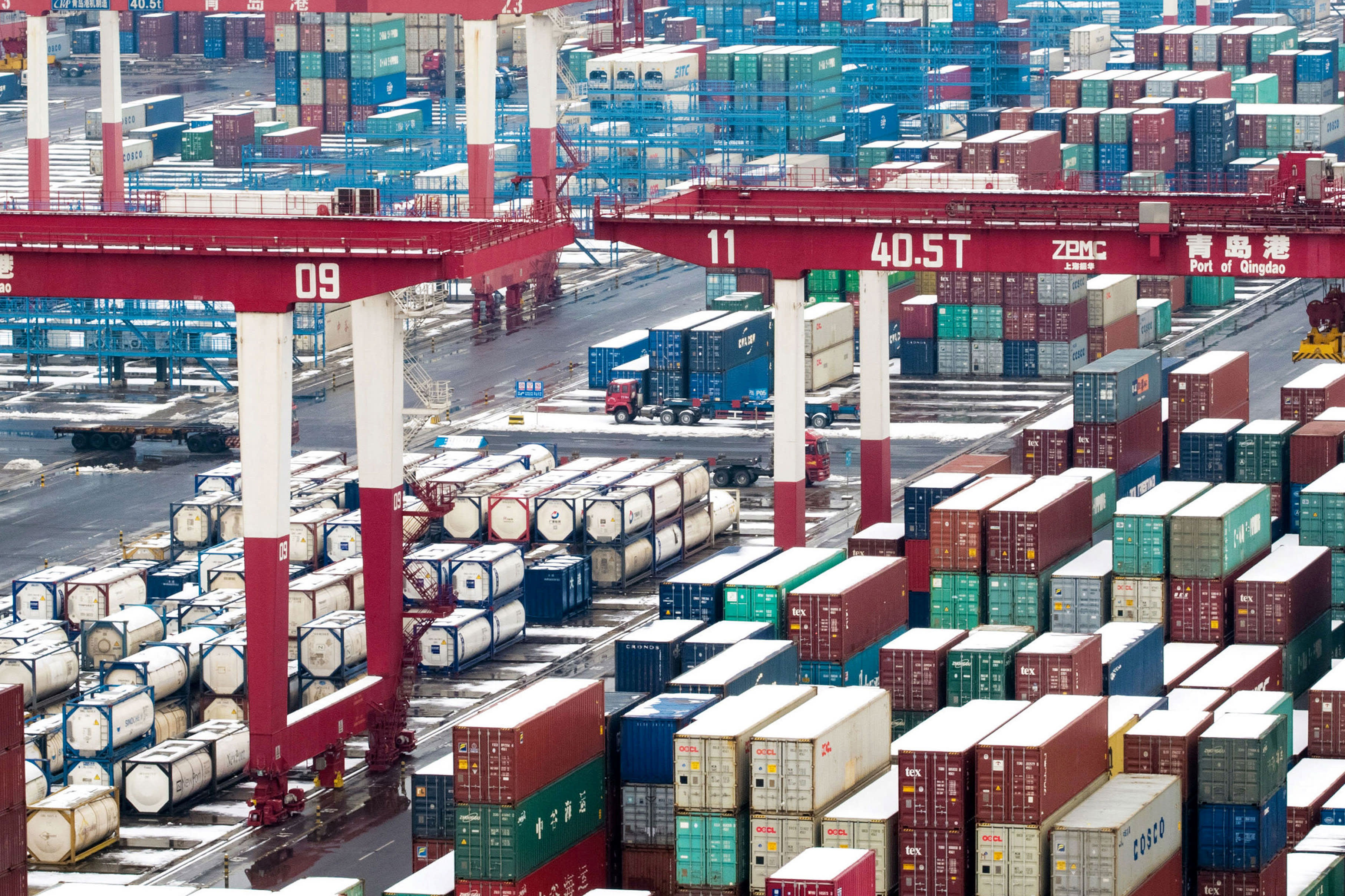Containers and trucks on February 14, 2019 in the port of Qingdao, China.
Reuters
BEIJING – China’s economy threatened with strong exports last year, but the boost is slowing.
The country’s customs agency said Tuesday that exports in dollars rose 30.6% year-on-year, missing expectations for growth of 35.5%.
Looking ahead to the next three months, Customs spokeswoman Li Kuiwen told reporters that last year’s high base posed second-quarter trading challenges. In addition, Li said that the revival of Covid-19 cases and overseas uncertainties – such as the Suez Canal blockade – mean that China still has a long way to go to achieve stable trade growth.
Chinese authorities want to shift the dependence of the economy on private consumption for growth, and not the production of goods for export. But the category still plays an important role in the overall economy. Last year, Chinese factories were able to resume production much earlier, with those in other countries still struggling with the pandemic.
National exports rose 3.6% last year, while the country’s GDP grew by 2.3% as the only major economy to expand amid the pandemic. Much of the export growth last year was due to an increase in demand for face masks and other protective equipment.
China’s early emergence from the pandemic and stimulus abroad has driven purchases of products made by Chinese factories, said Larry Hu, chief economist at Macquarie.
“These two factors will both disappear in the rest of this year as other countries reopen and consumers can spend more on services,” he said in an email on Tuesday. “That’s why I don’t think the current pace can keep up.”
March’s 30.6% increase in exports comes from a low base. China’s exports fell 13.6% in the first quarter of last year amid a 6.8% GDP contraction, according to data obtained by Wind Information.
Nomura analysts expect export growth to fall to 10% to 15% in April, with a larger slowdown in the second half of the year.
International e-commerce
In another sign of constraints on the ability of trade to contribute to national growth, e-commerce between China and other countries dampened in the first quarter.
The new, Internet-driven trend added 419.5 billion yuan ($ 64.5 billion) to trading in the first three months of the year. That was just under 5% of China’s trade during that time – little change from the ratio of almost 5.3% for the whole year ago.
While the figures for the first quarter grew 46.5% a year ago, the value of cross-border e-commerce in the first three months of the year was lower than the average of 422.5 billion yuan last year.
“The share of cross-border e-commerce remains low, containing the limits that contribute to imports and exports and the economy as a whole,” said Bruce Pang, head of macro and strategy research at China Renaissance. This is according to a CNBC translation of his Chinese statement.
He expects Chinese authorities to focus on expanding domestic demand and the domestic market, as a way to protect against possible fluctuations in foreign trade.
Imports were 38.1% higher than expected in March.
China will announce GDP figures in the first quarter on Friday. Data for January and February are usually distorted by the Spring Festival, the country’s largest holiday of the year.
